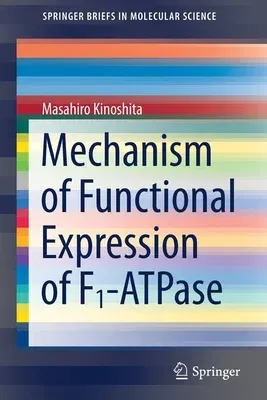Masahiro Kinoshita
(Author)Mechanism of Functional Expression of F1-Atpase (2021)Paperback - 2021, 30 January 2021

Qty
1
Turbo
Ships in 2 - 3 days
In Stock
Free Delivery
Cash on Delivery
15 Days
Free Returns
Secure Checkout

Part of Series
Springerbriefs in Molecular Science
Print Length
79 pages
Language
English
Publisher
Springer
Date Published
30 Jan 2021
ISBN-10
9813362340
ISBN-13
9789813362345
Description
Product Details
Author:
Book Edition:
2021
Book Format:
Paperback
Country of Origin:
NL
Date Published:
30 January 2021
Dimensions:
23.39 x
15.6 x
0.48 cm
ISBN-10:
9813362340
ISBN-13:
9789813362345
Language:
English
Location:
Singapore
Pages:
79
Publisher:
Weight:
140.61 gm